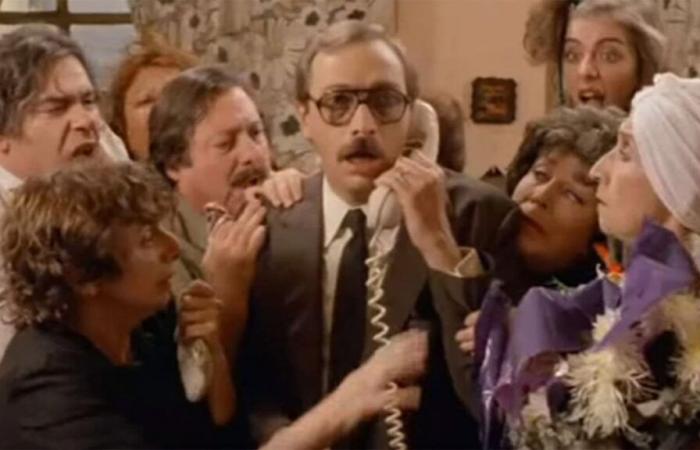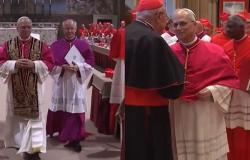At the time the newspaper El Día de Montevideo described his text as “incredible vulgarity” and “disrespectful nonsense” and even speculated that “the author abominated the Christian families Uruguayas” by the sarcasm present in the work. In that context, there was no chance for Mom Cora and her dysfunctional family.
Foto 3.webp
Background on TV
The work left the failure in Uruguay to have a first television adaptation for the cycle High Comedy of Channel 9one of the most prestigious of the 1970s and had an actress who would later be the cast of the film: China Zorrillain Elvira’s role, the same one he had in the film. They were from the game on that occasion actors such as Pepe Soriano, Raúl Rossi, Dora Baret, Alberto Argibay and Lita Soriano. Mama Cora was played by Austrian theater teacher Hedy Crilla.
According to Pablo Mascareño in a note from the newspaper La Nación, we had to wait for 1975 for the work to be presented in Buenos Aires, under the direction of Villanueva Cosse. Among the actors Juan Manuel Tenuta waswho in the 1985 film would form the marriage to China Zorrilla (in the characters of Sergio Musicardi Y Elvira), parents of Matildeplayed by Andrea Tenutadaughter of Juan Manuel Tenuta in real life.
Marked by failure
In Jacobo Langsner’s theatrical work, Mama Cora’s character appeared only at the end, that is, his impact on the narrative was remarkably lower. Alejandro Doria was the one who wanted to give him more weight in the film, especially after confirming that it would be Antonio Gasalla who was going to interpret that role.
It was not a role created specifically for the film, since Gasalla made two very similar characters in their presentations at the Maipo Theater. There were two old women who appeared in the bank of a square, which unlike Mama Cora were very lucid and informed. Gasalla changed those last features for a more lost, disoriented co -mother, although he once said that the accessories he used in the movie were the ones he used for his characters in the theater.
Undoubtedly, the cast of the film was part of this success that was built over the years, with figures such as the aforementioned China Zorrilla, Antonio Gasalla, Mónica Villa, Julio de Grazia, Juan Manuel and Andrea Tenuta, to which we must add to Luis Brandoni, Betian Blum, Enrique Pinti, Lidia Catalano, Cecilia Rossetto y Darío Grandinettiamong others. By the way, the criticism specialized in 1985 was almost as ruthless at the premiere of the film as they were in Uruguay in 1962. Time gave the final verdict and Waiting for the float It ended up becoming a cult film.
Foto 4.webp

The sad three empanadas
The three empanadas scene, played by Luis Brandoni and Juan Manuel Tenuta, is one of the most replicated and famous in the film.
–What misery che, what misery. Do you know what they had to eat?
-–Empanadas.
–These, my soul broke. Three empanadas that were left over yesterday for two people. My God, how little can be done for people.
A few years ago Brandoni surprised everyone with what happened in the filming of this particular scene, stating: “It never caused us to film it, it is a sad, cynical scene and today Argentines cause us to grace.”
Piled up
Betiana Blum (Nora) recalled in a note the mastery of director Alejandro Doria to build comic from different aspects, even in the spatial. He referred specifically to the scene in which Antonio, the character played by Luis Brandoni, speaks with a commissioner by telephone and the whole family surrounds him. “I asked impossible things, we were forty and made us stop on ten tiles and make the scene there, all the approaches were like that. He imagined a way of telling it that is great. You see it and laugh again.”
Photo 6.JPG

Where is my friend?
Although he was a secondary character, the presence From Angelita Pardothe mother of drunk Felipe (Enrique Pinti), was a loving act of recognition by Alejandro Doria. At the time of filming she was 95 years old (he died three years after the premiere) and lived in the theater house.
He had been an Argentine folklore star, especially for the duo that made up Juan Raggi. Came to appear next to legendary figures of our music, such as Carlos Gardel. Her phrase “Where is my friend” was not only a despotive moment in the film, but until today it is part of everyday dialogues and memes, so Angelita is still present in the recognition of the new generations.
The after
A forgettable second part in 2009, tours destined to travel the locations of the film and the return of the play to the theater. All this caused Waiting for the floata phenomenon born in the cinema 40 years ago and destined to perpetuate itself.
In the latest theatrical version, where Mama Cora’s character plays it Martín Campilongo (Campi), There was a conflict that ended up prosecuting, for a claim of the only heir of Alejandro Doria, who claimed that he should receive the corresponding copyright payment, since that setting was based more on the script of the film than on the original theater work.
Argentores finally accepted the claim, stating that many of the author’s decisions were clearly extracted from the film, so it was necessary to pay rights due to the use of elements of the film waiting for the float in the theatrical adaptation, which is still on the Buenos Aires billboard.









